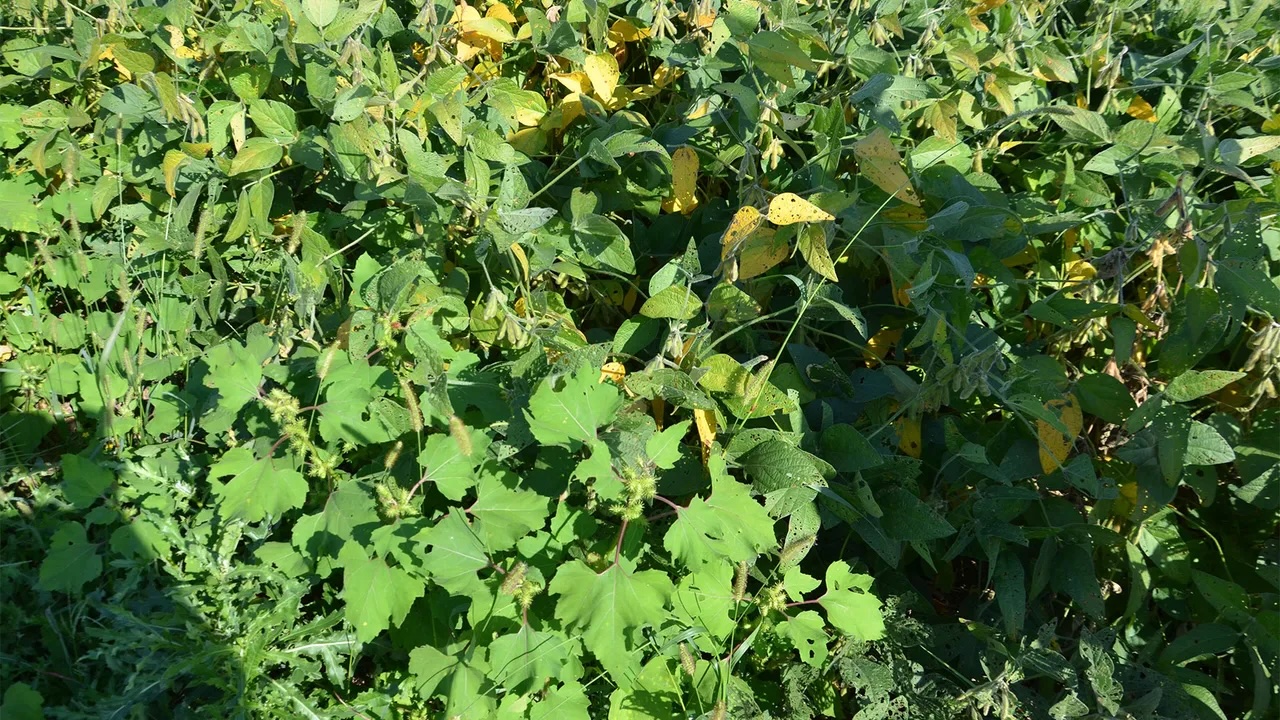How to plan approach for foliar applications

My goal in soybeans is 80 to 90 bushels per acre. Should I apply foliar nutrients? We reached these yield levels before and applied some foliar nutrients. Which ones should we use? How much?
The Indiana certified crop adviser panel answering this question includes Betsy Bower, agronomist for Ceres Solutions, Terre Haute; Abby Horlacher, Nickel Plate Consulting, Frankfort; and Brian Mitchem, proprietary products manager for Nutrien Ag Solutions, Fort Wayne.
Bower: Tissue tests may help determine not only if you need to apply foliar plant nutrients, but also which ones. And while foliar nutrition can provide a good return on investment, there are several other agronomic factors key to producing 80 to 90 bushels per acre in soybeans.
First, can I assume soil phosphorus, potassium and soil pH are in good shape? Were you able to plant early? If you planted early, did you apply sulfur?
If soil fertility and soil pH are good, soybean emergence was even, and the field is in the hunt for high yield, take tissue tests. Start tissue sampling soybeans at R1 or first flower. You can sample earlier, but a well-fed soybean is typically happy until R3. If you start at R1, consider taking another sample at R2 and again at R3 to see if the same nutrients remain low each time.
Which nutrients to apply? Let tissue tests guide you. Several companies have foliar nutrient products that include macronutrients like nitrogen, phosphorus and potassium, as well as secondary nutrients like sulfur. There are also some pretty good micronutrient packages that include zinc, boron and manganese. And there are some products that have both macros and micros. But use the tissue tests to guide you. At reproductive stages, boron can improve pollen health and pod retention. Calcium is another one, and some believe molybdenum is important.
The best time to apply foliar nutrients would be around R2 to R3. The amount to apply depends on how low the nutrient is in the plant, concentration in the product, suggested rate on the product label and other products that may be in the tank-mix. Some foliar products can be applied at 1 gallon per acre, whereas others go out at 6 to 8 ounces per acre. You may want to try some acres of a few different products.
Horlacher: Two key factors are soil test levels and weather conditions. Plants take in potassium to transfer it to grain later. In drought conditions, potassium is no longer in solution and is not transferred into the plant. This could be a time to go in with a foliar potassium application. You can know how much to apply based on multiple tissue tests and soil test levels.
Mitchem: Most plant nutrition will be derived from your root system. Foliar applications are designed to supplement a sound soil management program.
Leachable elements like sulfur and boron can be valuable as foliar additions. Manganese and potassium are often limiting
from the soil when dry conditions exist.
Tissue testing can help reveal limiting nutrients. Let those results guide your decisions. Sample tissue only in early morning.
Most foliar products are used between 1 quart and 1 gallon per acre. There is a finite amount of product you can apply to benefit a plant via foliage at any one time.
I have been seeing increased performance results from molybdenum and magnesium, too. Apply before reproduction begins.













